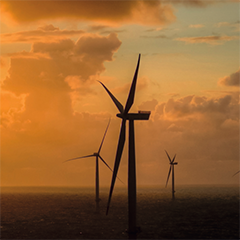A quick and easy AC solution, or a highly sophisticated connection using DC technology? The best transmission solution for offshore wind parks depends on both distance and output. But cost is key: for both technologies, Siemens is putting all its development efforts into downsizing and standardization, in order to minimize installation and operational costs.
It started off as the most expensive renewable energy solution, but offshore wind has experienced many improvements to its efficiency over the last ten years. Innovations in the turbines themselves, for example, more optimally sized rotors and a higher hub height, have significantly increased their annual energy production and led to substantial savings in the cost of the turbine foundations and construction. Industry association WindEurope estimated that, combined with other technology improvements, this may account for at least 20 percent of the levelized cost of energy (LCOE) by 2030.
‘Current innovations in electrical transmission and grid connections for offshore wind will have a similar if not even greater impact on LCOE,’ says Andreas Barth, Head of Grid Access in Large Transmission Solutions at Siemens Gas and Power. ‘We’re minimizing platform size for grid connections, and our transmission links account for lower energy losses. Ultimately, our customers can expect a 30 percent reduction in installation and operation costs with our solutions!’
As the market leader in every aspect of wind technology, Siemens is currently connecting 7,000 megawatts (MW) of offshore power to the grid. Another 4,500 MW is under contract. Most of these connections are made with alternating current (AC) substations, the first choice for wind farms close to the shore with an output of up to 1,000 MW. This is still the scenario for most of the projects in the North Sea.



























